Today’s Current Affairs: 11th Oct 2023 for UPSC IAS exams, State PSC exams, SSC CGL, State SSC, RRB, Railways, Banking Exam & IBPS, etc
Table of Contents
Periodic Labour Force Survey 2023:
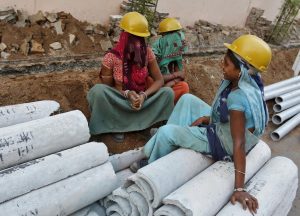
The recent Periodic Labour Force Survey (PLFS) has reported that the unemployment rate in the country has shown a decrease between April and June 2023.
Findings:
- The Labour Force Participation Rate (LFPR) for persons of age 15 years and above and the Worker-Population Ratio (WPR) improved during the period.
- The LFPR in urban areas increased from 47.5% in April-June 2022 to 48.8% in April-June 2023 for persons of age 15 years and above.
- The WPR in urban areas increased from 43.9% in April-June 2022 to 45.5% in similar months in this year for persons of age 15 years and above.
- For male, it increased from 68.3% to 69.2% and for female, it increased from 18.9% to 21.1% during this period.
Periodic Labour Force Survey (PLFS):
- Considering the importance of availability of labour force data at more frequent time intervals, National Statistical Office (NSO) launched Periodic Labour Force Survey in April 2017.
Bronze Diabetes:
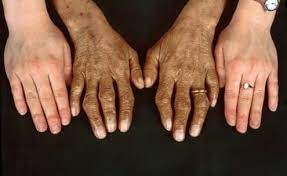
Health experts revealed all about Hemochromatosis or ‘bronze diabetes’.
- It is an inherited condition where iron levels in the body slowly build up over many years.
- This health condition is primarily classified into two types:
- Hereditary hemochromatosis: It is driven by a mutation in the HFE gene, resulting in individuals being homozygous for the C282Y variant. This genetic anomaly sets the stage for a lifelong struggle with excessive iron absorption within the intestines.
- Secondary hemochromatosis: It is typically caused by external factors like frequent blood transfusions, excessive iron supplementation, or certain medical conditions. The iron accumulation in secondary hemochromatosis is often more rapid and can have a similar impact on organ function
- Symptoms of haemochromatosis usually start between the ages of 30 and 60.
- Common symptoms include: Feeling very tired all the time (fatigue), weight loss, weakness and joint pain etc
- Treatment:
- Phlebotomy is the standard treatment for primary hemochromatosis.
- Iron toxicity can be reduced by removing red blood cells, the body’s main mobilizer of iron.
- Phlebotomy is usually performed once or twice a week.
Exercise CHAKRAVAT:
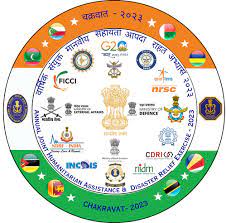
The 2023 edition of the Annual Joint HADR Exercise, CHAKRAVAT, is being hosted by the Indian Navy at Goa from 09 to 11 Oct 23.
- Exercise CHAKRAVAT is an Annual Joint Humanitarian Assistance and Disaster Relief HADR Exercise (AJHE)
- Since its first edition in 2015, the Annual Joint HADR Exercise, CHAKRAVAT has transformed itself into a multi-agency endeavour.
- It involves participation of all three Services, Paramilitary Forces, as well as several disaster response organisations, NGOs, academic institutions and international organisations.
- The 2023 edition would further synergise efforts at the national level among all stakeholders, as well as witness participation from eight countries of the Indian Ocean Region.
- The exercise has been conducted by the Indian Army, Indian Navy (IN) and Indian Air Force (IAF) in rotation since 2016.
- The 2023 edition of the exercise is being hosted by the Indian Navy at Goa.
- The exercise will witness participation from various national agencies namely, National Disaster Management Authority (NDMA), National Disaster Response Force (NDRF), National Institute for Disaster Management (NIDM), Indian Army, Indian Navy, Indian Air Force, Coast Guard, Indian Metrological Department (IMD) and other organizations.
2023 Economics Nobel Prize:
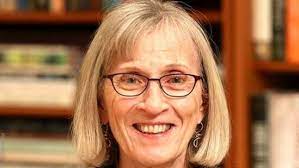
US labour economist Claudia Goldin was recently awarded the 2023 Nobel Prize in Economic Sciences for her contributions to understanding women’s labor market outcomes.
- She provided the first comprehensive account of women’s earnings and labour market participation through the centuries.
- Her research reveals the causes of change as well as the main sources of the remaining gender gap.
- She showed that female participation in the labour market did not have an upward trend over a 200-year period, but instead forms a U-shaped curve.
- The participation of married women decreased with the transition from an agrarian to an industrial society in the early nineteenth century, but then started to increase with the growth of the service sector in the early twentieth century.
- Goldin explained this pattern as the result of structural change and evolving social norms regarding women’s responsibilities for home and family.
- Historically, much of the gender gap in earnings could be explained by differences in education and occupational choices.
- However, Goldin has shown that the bulk of this earnings difference is now between men and women in the same occupation, and that it largely arises with the birth of the first child.
- She highlighted the role played by marriage, parenthood, and contraceptive pills in women’s education, career, and salary trajectories.
Birth Anniversary Of Shri Ramalinga Swamy:
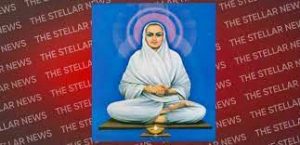
India celebrated the 200th birth anniversary of Shri Ramalinga Swamy, also known as Vallalar, on 5th October, 2023.
- Shri Ramalinga Swamy was a prominent Tamil poet in the 19th century and a member of the “gnana siddhars” lineage.
- He was born in the village of Marudhur in Tamil Nadu.
- Vallalar’s vision transcends religious, caste, and creed barriers, recognizing divinity in every atom of the universe.
- Vallalar was strongly against the caste system and initiated the ‘Samarasa Vedha Sanmarga Sangam’ in 1865, later renamed ‘Samarasa Suddha Sanmarga Sathya Sangam.’
- He established ‘The Sathya Dharma Salai,’ a free food facility in Vadalur, Tamil Nadu in 1867, serving all people without caste distinctions.
- Vallalar opened the ‘Sathya Gnana Sabha’ (Hall of True Knowledge) in Vadalur.
Operation Kachchhap:

In a recent operation named “Kachchhap,” the Directorate of Revenue Intelligence (DRI) has successfully rescued nearly a thousand live baby Gangetic turtles, shedding light on the ongoing battle against illegal wildlife trade and the protection of these unique creatures.
- The Ganga river system in India is home to 13 species of turtles, they face various threats from habitat loss, overexploitation, and pollution.
- The operation resulted in the recovery of live baby turtles of different species, such as the Indian Tent Turtle, Indian Flapshell Turtle, Black Spotted/Pond Turtle, and Brown Roofed Turtle ,some of which are considered vulnerable or near-threatened species according to the International Union for Conservation of Nature (IUCN) Red List and are protected under the Wildlife (Protection) Act, 1972.
- DRI serves as India’s premier anti-smuggling agency, operating under the Central Board of Indirect Taxes & Customs, Ministry of Finance. It is responsible for detecting and preventing various forms of smuggling, including illicit wildlife trade.
Travel For LiFE Initiative:
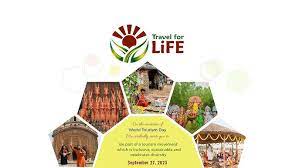
The Pacific Asia Travel Association (PATA) is partnering with India to expand the Travel for LiFE (Lifestyle of the Planet, for the Planet, and by the Planet) initiative across the Asia-Pacific region.
- The Ministry of Tourism in India will establish a PATA desk to enhance engagement with PATA regarding Travel for LiFE and other tourism-related cooperation.
- Travel for LiFE is a sectoral program launched by the Ministry of Tourism in India in collaboration with the Ministry of Environment, Forest and Climate Change, the United Nations World Tourism Organisation (UNWTO), and the United Nations Environment Programme (UNEP)
- The initiative aims to bring about behavioural changes in both tourists and tourism businesses, focusing on environmental protection and socio-cultural sustainability.
- The program also encourages tourism businesses to adopt sustainable practices and earn certification levels.
52nd GST Council Meeting: Recommendations

The 52nd GST Council Meeting made several important recommendations:
- Amendments in Appointment of GST Appellate Tribunals – in the conditions for appointing the President and Members of the proposed GST Appellate Tribunals.
- GST Rates for Millet Flour: GST rates for food preparation of millet flour in powder form, containing at least 70% millets by weight, were specified as follows:
- 0% when sold in non-pre-packaged and unlabelled form.
- 5% when sold in pre-packaged and labelled form.
- Exclusion of Extra Neutral Alcohol (ENA) from GST
- Reduced GST on Molasses: The GST rate on molasses was reduced from 28% to 5%.
- IGST Exemption for Foreign Going Vessels
GST Council:
- It is a constitutional body under Article 279A (101 Constitution Amendment Act, 2016).
- Function is Making recommendations on issues related to the implementation of GST
Asia-Pacific Institute For Broadcasting Development:
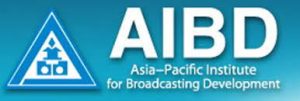
India re-elected the Asia-Pacific Institute for Broadcasting Development (AIBD) General Conference (GC)president for the third successive term recently.
- The Information & Broadcasting Ministry Secretary, Apurva Chandra, said this was a first in the history of AIBD.
- The move showed the confidence broadcasting organizations across the Asia Pacific and the world reposed in India.
Asia-Pacific Institute for Broadcasting Development (AIBD):-
- Established:1977
- Host: Government of Malaysia
- Secretariat: Kuala Lumpur.
- Objective is to achieve a vibrant and cohesive electronic media environment in the Asia Pacific region through policy and resource development.
- It has 92 member organizations from across 44 countries, including 26 government members (countries) represented by 48 broadcasting authorities and broadcasters.
- It also has 44 affiliates (organizations) represented by 28 countries and regions in Asia, the Pacific, Europe, Africa, Arab States, and North America.
- India is one of the founding members of this organization.
- The Prasar Bharati is the representative body of the Ministry of Information & Broadcasting, Government of India, at AIBD.
- It was established under the auspices of the United Nations Educational, Scientific and Cultural Organization (UNESCO).
- It is a unique regional inter-governmental organization servicing countries of the United Nations Economic and Social Commission for Asia and the Pacific (UN-ESCAP) in the field of electronic media development.
- The Institute seeks to fulfill this mandate by mobilizing the intellectual and technological resources available within the national broadcasting organizations of its member countries as well as regional and international bodies.
- It does it through a well-established infrastructure and networking mechanism which includes government agencies, non-governmental organizations, institutions of higher learning, the private sector, and individual professionals.




